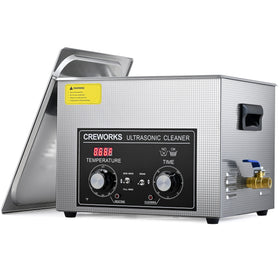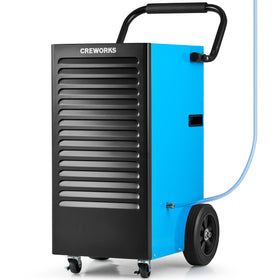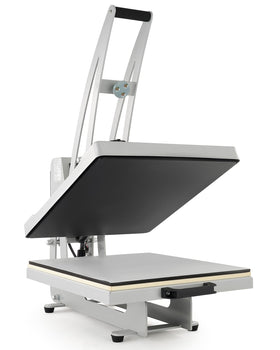With over 10000+ orders
With over 10000+ orders
There are several reasons why you would need to strip copper wire. Perhaps you recycle copper wire. Maybe you're an electrician or hobbyist setting up a new circuit. No matter what your reason, poorly stripped wire can be a pain (and maybe even dangerous).
Something as simple as faulty connections account for 20% of electrical home fires. If you are handling electronic items or scrapping copper wires in bulk, let's get to it and find out how to strip copper wire safely and efficiently.

The simplest method for stripping insulation from copper wire is hand-stripping. It might not be the fastest way to do it for massive projects, but you can use it for small-scale jobs or when dealing with delicate wires. Let's explore the tools needed and show you how to strip copper wire by hand.
Precision is key here. Measure how much of the insulation you will have to remove and make a visible mark on your wire. A fine point marker will get the job done but if you have some time and want a very clean-looking cut grab yourself a masking tape.
This step requires a delicate touch. Slice around the wire at your marked point with a utility knife or even wire strippers.
The aim is to strip away the insulation, without breaking through all of the way down and hitting the copper core. For stranded wire, be extra cautious; nicking even a few strands can compromise the wire's integrity.
Once scored, gently bend the wire at the marked point. This technique works particularly well for solid core wires, causing the insulation to separate cleanly.
For stranded wires, use a lighter touch to avoid separating the individual strands. If the insulation proves stubborn, don't force it – simply score it again, slightly deeper this time.

Here's where your pliers come into play. Grip the scored section firmly and pull it away from the wire with a steady, even motion.
The insulation should slide off, revealing the shiny copper core beneath. If you encounter resistance, try twisting the insulation slightly as you pull – this can help break any remaining connections.
The final touch – and one often overlooked – is to ensure the exposed copper is pristine. If necessary, use fine-grit sandpaper to remove any lingering insulation residue. A light touch is crucial here; you want to clean the copper, not remove it.
This brings us to using handheld tools for stripping copper wire. They eliminate all the cons of stripping copper wires by hand.
Let’s say you own a nifty manual wire stripper like the one we offer with 0.06"-1" Copper Wires Recycling, follow the steps below:

Most wire strippers feature multiple notches, each designed for a specific wire gauge. Choose the appropriate size for your wire.
When in doubt, start with a larger opening and work your way down. This approach prevents accidentally cutting into the copper core, which can weaken the wire or create a potential failure point.
Insert your wire into the chosen notch, aligning it with the desired stripping point. Many quality strippers have a built-in stop or guide to ensure consistent strip lengths. For precision work, you might even mark your desired strip length on the tool itself with a piece of tape.
Close the stripper handles firmly, allowing the blades to penetrate the insulation. The key here is to apply enough pressure to cut through the insulation without damaging the copper within.
If you're using adjustable strippers, you may need to fine-tune the tension for optimal results. It's worth taking the time to get this right – a perfectly adjusted stripper can make your work significantly faster and more consistent.
For non-automatic strippers, rotate the tool around the wire to ensure you've scored the entire circumference. This step is crucial for achieving a clean strip, especially on tougher insulations. Think of it like cutting around a tree trunk before felling it – a complete score ensures a clean break.
With a smooth, steady motion, pull the stripper away from the wire end. The insulation should separate cleanly, revealing the copper beneath.
If you encounter resistance, resist the urge to force it. Instead, check if you need to score the insulation more deeply or if there's any damage to the wire. A clean strip should come away easily, leaving the copper core untouched.
For those who find themselves stripping wire regularly but aren't quite ready for a fully automated system, the CREWORKS Manual Wire Stripping Machine offers an excellent middle ground.
Here’s our Manual Wire Stripping Machine for 0.06"-1" Copper Wires Recycling. This bench-mounted tool significantly increases stripping speed and consistency while still providing hands-on control.
Imagine you're working on restoring a classic car, with a mix of original wiring and modern replacements. The manual stripper would allow you to switch easily between different wire types, maintaining the original wiring where possible while efficiently preparing new connections.

When dealing with large quantities of wire or regularly stripping as part of your work, you will appreciate the endurance and efficiency of automated wire stripping machines.
These devices offer unparalleled speed and consistency, making them essential for industrial applications, large-scale recycling operations, or high-volume electrical work.
An example of how automation can change the game is demonstrated by this Automatic Wire Stripping Machine from CREWORKS. Its mix of speed, precision, and flexibility makes it capable of covering a variety of applications.
The choice, as always, is yours. All of us have different needs. If you searched “how to strip copper wire” just to learn a simple way to do it safely, then the section on stripping by hand will suffice. But if you’re an electrical technician, you don’t want to risk inconsistencies.
DIYers are not left out—you want your projects wired up without issues. For the last two groups, we recommend the CREWORKS range of manual wire strippers. Do you strip copper wire on a large scale? Then one of our automatic strippers will take your stripping business to the next level.












Leave a comment